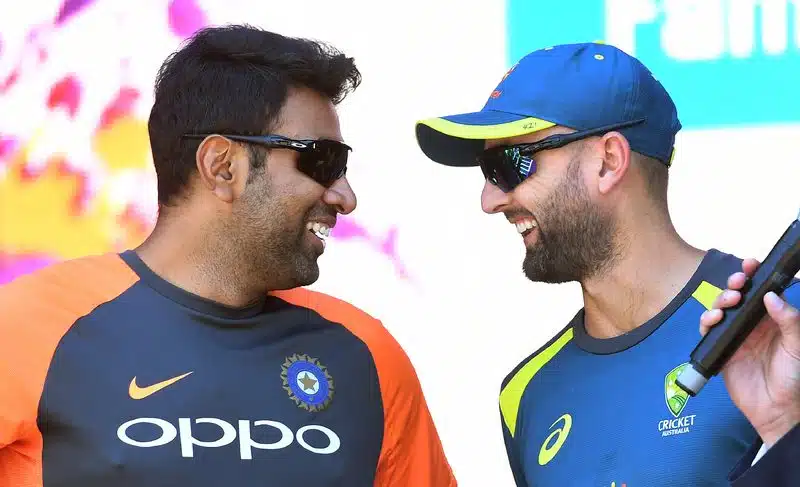
In a mean world of vicious hard-hitting batsmen, there came a point when it was believed the breed of spinners, especially the wrist-spinners, would go extinct. The logic was simple and subtle; T20 format had come into prominence and the batsmen had become risk-free. Hence that agitation of conceding more runs was obvious.
As it turned out though, something extremely contrary transpired. The lack of pace meant that this dynasty – wrist spinners — was harder to score runs against and the piling of pressure elicited into quick wickets. The gene, which was supposed to fall out of favour post-Shane Warne's retirement, rose from the ashes and claimed the thorn in absolute style.
Regardless of finger-spinners' domination in the longest format of the game, wrist-spinners have taken over the mantle. There, however, still remains a healthy debate over the selection amongst these two tribes (in limited-overs) and Harbhajan Singh’s outstanding spell of three for 20 against Bengaluru in the opening match of Indian T20 League has provided a much-needed push.
The veteran Indian spinner, who has played three ODI World Cups including two finals, says that finger spinners still have a role to play. All we need to do is to back them. "It's come down to the people and their belief whether finger spinners could do the job or not. I feel finger spinners have a role to play provided you back them," he was quoted as saying to Reuters.
The recent figures though haven't been in their favour and the meteoric rise of wrist spin hasn't helped their cause either. Talking numbers, England's Adil Rashid has taken more wickets (9) than Sri Lanka's Dhananjaya de Silva (5) despite playing just three ODIs compared to de Silva's five in 2019. The England bowler also tops the chart as far as average (20.77 to 31.00 of de Silva) and strike rate (16.60 to 33.60 of de Silva) is concerned.
| Leading wicket-takers among wrist spinners in ODIs in 2019 | |||||
| Player | Mat | Wickets | Ave | Econ | SR |
| Kuldeep Yadav (INDIA) | 11 | 20 | 27.35 | 5.52 | 29.70 |
| YS Chahal (INDIA) | 7 | 16 | 21.31 | 5.59 | 22.80 |
| A Zampa (AUS) | 8 | 12 | 34.91 | 5.23 | 40.00 |
| Imran Tahir (SA) | 7 | 11 | 22.54 | 3.87 | 34.90 |
| AU Rashid (ENG) | 3 | 9 | 20.77 | 7.48 | 16.60 |
| Leading wicket-takers among Finger spinners in ODIs in 2019 | |||||
| Player | Mat | Wickets | Ave | Econ | SR |
| GH Dockrell (IRE) | 5 | 8 | 25.00 | 5.26 | 28.50 |
| Mujeeb Ur Rahman (AFG) | 4 | 7 | 17.14 | 3.15 | 32.50 |
| AR McBrine (IRE) | 4 | 6 | 24.50 | 3.76 | 39.00 |
| J Cameron-Dow (IRE) | 4 | 5 | 30.20 | 4.87 | 37.20 |
| DM de Silva (SL) | 5 | 5 | 31.00 | 5.53 | 33.60 |
And as we talk of T20Is, no one comes close to Afghanistan's Rashid Khan.
The overall figures show wrist-spinners have delivered better numbers in both ODIs and T20Is in 2019. Afghanistan's Rashid Khan has been an absolute phenom in T20Is thus far, picking 11 wickets in mere three games. Even though the wrist spinners have taken fewer wickets in T20Is, their average and economy has made them the first choice ahead of their rivals.
| Leading wicket-takers among wrist spinners in T20Is in 2019 | |||||
| Player | Mat | Wickets | Ave | Econ | SR |
| Rashid Khan (AFG) | 3 | 11 | 6.63 | 6.08 | 6.50 |
| Tamoor Sajjad (Qatar) | 5 | 10 | 13.20 | 6.82 | 11.60 |
| IS Sodhi (NZ) | 4 | 6 | 19.50 | 9.11 | 12.80 |
| S Lamichhane (NEPAL) | 3 | 5 | 13.40 | 6.70 | 12.00 |
| Muhammad Nadeem (Saudi) | 2 | 5 | 9.80 | 9.80 | 6.00 |
| AU Rashid (ENG) | 3 | 5 | 9.00 | 5.00 | 10.80 |
| Leading wicket-takers among Finger spinners in T20Is in 2019 | |||||
| Player | Mat | Wickets | Ave | Econ | SR |
| Sultan Ahmed (UAE) | 5 | 9 | 13.33 | 7.05 | 11.30 |
| MRJ Watt (SCOT) | 3 | 7 | 11.57 | 6.75 | 10.20 |
| Babar Ali (BAH) | 3 | 5 | 14.00 | 7.77 | 10.80 |
| KH Pandya (INDIA) | 5 | 5 | 33.80 | 8.45 | 24.00 |
| MJ Santner (NZ) | 4 | 5 | 19.80 | 8.25 | 14.40 |
But what exactly is it that takes the wrist spinners a step ahead?
For starters, finger-spinners – at times – require assistance from the pitch in order to get the spin. Wrist spinners, on the other hand, can swirl their magic even on the flat surface, which makes them a safer bet on batsmen-friendly pitches.
Finger-spinners’ inability of extracting better outcome with a new ball also makes them extremely vulnerable especially in the shortest format of the game. After all, they rely on their fingers to get a turn and a new ball means lesser the grip.
The One-Day Internationals are a completely different ball game. Spinners usually make their appearance during the middle overs and are tasked to keep the run flow in check. Having a diversity of variations to show for, the wrist-spinners not only rope the flow but also pick crucial wickets.
It indeed took time for the wrist-spinners to assert their authority, and they have done it absolute style. And the fact that six out of top 10 T20I bowlers in ICC rankings are wrist spinners is the perfect prototype.





















